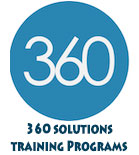Assessing Your Organization: All Organizations are Perfectly Designed to Get the Results They Achieve
 By attending this Assessing Your Organization training program, you will learn a model that reduces the vast complexity of your organization to the seven key elements that account for its success. These seven elements enable you to diagnose the current functioning of your organization and to know where and how to make improvements.
By attending this Assessing Your Organization training program, you will learn a model that reduces the vast complexity of your organization to the seven key elements that account for its success. These seven elements enable you to diagnose the current functioning of your organization and to know where and how to make improvements.
Part One
During the program you will:
- Learn a model for understanding your organization.
- Do a comprehensive assessment of the current performance of your organization.
- Benchmark your organization in relation to others within your community/ industry.
- Develop a shared understanding of your greatest strengths and weaknesses.
- Target and prioritize the top opportunities for change.
- Develop detailed improvement plans.
During each module you will:
- Learn the meaning of one of the seven elements of an organization’s performance.
- Divide into small groups to assess your organization’s performance on this element.
- Get back together and share your findings with the larger group.
- Summarize and identify key learning and opportunities.
The Assessing Your Organization training program can be delivered in a modularized format (2 1/2-to-3 hour sessions spaced over time) or in a 2-to-2 1/2-day format. It usually involves not only the leaders of the organization but also other key people representing a cross-section of all employees.
Part Two
1. The Transformation Model
- Define organization assessment and understand its purpose.
- Learn basic principles of open systems.
- Learn the purpose and uses of the Transformation Model.
- Use the Transformation Model to analyze an organization case study.
2. Current Results
- Review and discuss the current financial/cost structure of the organization.
- Summarize your organization’s key result area and performance.
- Assess the adequacy of current resources.
3. Business Environment
- Review current market conditions and key competitors.
- Identify key customer, key stakeholders, and their expectations.
- Evaluate current market conditions affecting your organization.
- Review the strengths and weaknesses of key competitors.
4. Current Strategy
- Define business strategy and core ideology and learn their importance.
- Analyze the elements of business strategy within your organization.
- Analyze the elements of core ideology within your organization.
- Report findings and draw conclusions about your current business strategy and the core ideology.
5. Core Process
- Learn the elements of simple core process mapping.
- Map the macro core process of your organization.
- Identify process variances and key variances related to your organization’s core process.
- Determine the efficiency of your core process and identify the biggest process issues to be addressed.
- Describe and analyze the computer information delivery system supporting your core process.
6. Structure
- Analyze the nature and rationale of your current hierarchical structure.
- Examine management, worker, team, and support group roles.
- Identify how you are currently grouped and why (functions, departments, team, etc.)
- Identify how organizational units are currently linked and why.
- Develop and “organigraph” (pictograph) of how your organization really works.
- Summarize key learnings and critical structure issues to address.
7. Systems
- Learn about coordination and development systems.
- Verify how each system is currently working.
- Identify strengths and weaknesses of coordination systems.
- Identity strengths and weaknesses of development systems.
- Identify strengths and weaknesses, and key culture learnings and challenges.
8. Culture
- Survey the basic work culture and general morale in your organization.
- Assess current job satisfaction
- Identify common management and worker attitudes, practices, and beliefs.
- Identify organizational norms around collaboration and performance.
- Identify strengths and weaknesses, and key culture learnings and challenges.
9. Opportunity and Plans
- Summarize key issues from Modules 2 through 8.
- Identify organization strengths weaknesses, and alignment issues.
- Identify biggest opportunities/issues to address.
- Develop a list of change initiatives
- Create a sequenced initiatives time line.
- Learn how to set up and manage project teams.
Start your organization’s high performance transformation with Donald J. Ford, Ph.D. and this 360 Solutions Training Program: Click Here!
Or go to the Training Education Management Contact Us page for program inquiries.